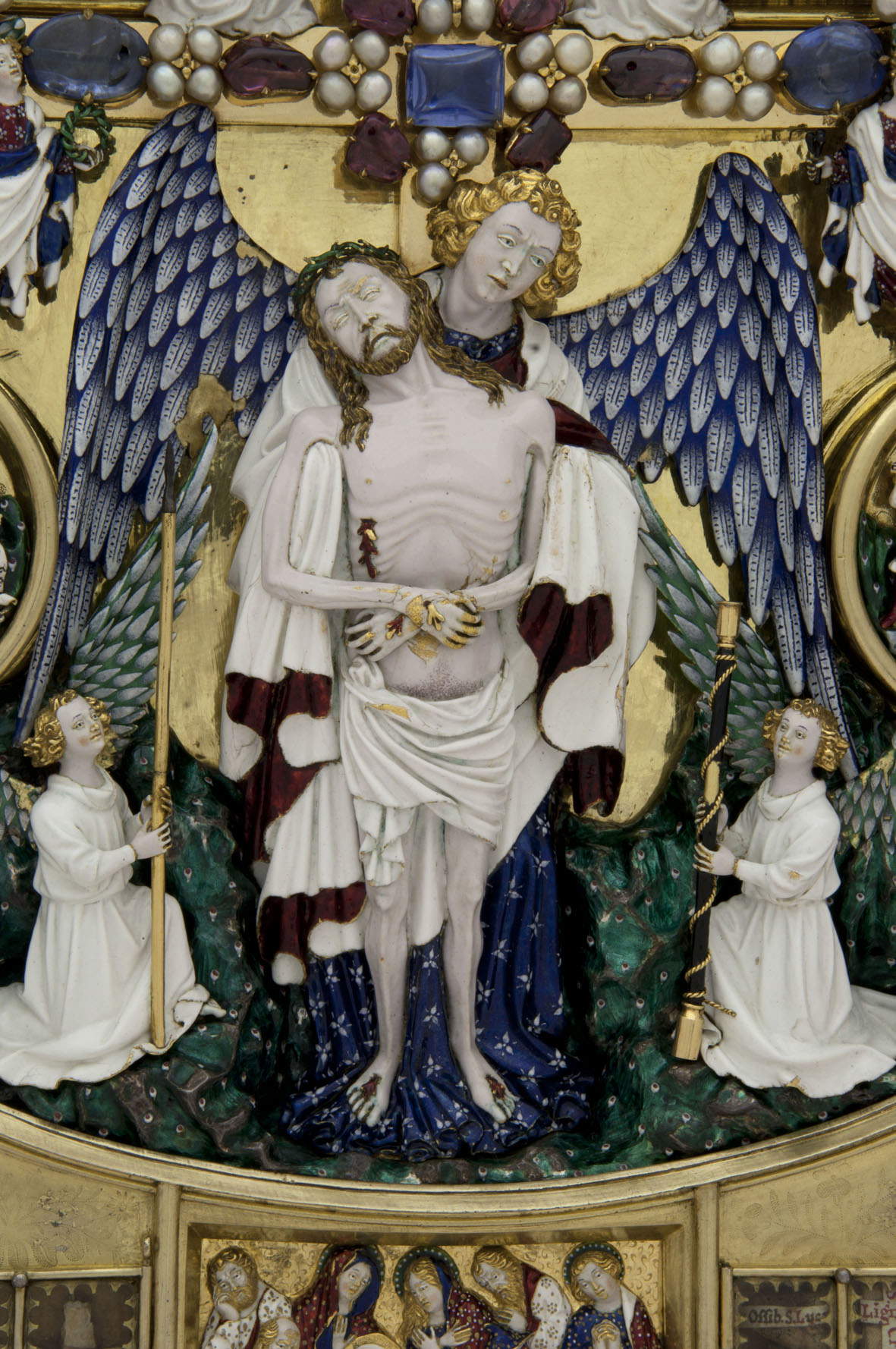From February 23 to May 4, 2024, the Reliquary of Montalto delle Marche will be presented at the Museo dell’Opificio delle Pietre Dure in Florence: the masterpiece of Gothic and Renaissance goldsmithing that has passed through the Valois dynasty, the Habsburgs, the Este family, and the papal treasury will be on display after the intervention to which the professionals of the Opificio delle Pietre Dure subjected it ten years after its restoration in 2013. The work was brought back to Florence for a thorough overhaul of the metal structure and enameled elements. The tightness of the consolidations on the enameled elements and the presence of fragile points were checked. Inside the reliquary, it was also essential to relocate three small detached fragments, all from the green lawn on which the main figures rest. This particular meadow is the only element of the reliquary that was enameled on silver rather than gold, making it more susceptible to weathering, especially in areas where fractures or enamel fall-off occurred. The three fragments were carefully repositioned by micro-gluing, and other places on the lawn that showed signs of possible chipping were also consolidated.
Because these fragments are enameled on silver rather than gold, they are more susceptible to alteration, so it was necessary to consolidate other points of the lawn that showed signs of possible detachment. The reliquary shines because of the refined technique of workmanship and the preciousness of the materials. Made of gold and silver, it surrounds the touching scenes related to Christ’s passion with nineteen sapphires, twenty spinels, fifty-nine pearls, and a fine cameo in sardonyx of Byzantine manufacture.
Few works of goldsmithing can boast such a documented and very high-profile collecting history as his: the earliest part of the work, in tablet form, hung in the Louvre chapel according to the inventory of the treasure of Charles V of France (1338-1380), to whom the commission of the magnificent all-round enamels on gold executed perhaps by Jean du Vivier, court goldsmith, must presumably be attributed. A blond angel with large blue and white wings holds the lifeless body of Christ, offering it for contemplation. In 1439, it was part of the estate of Frederick IV of Habsburg, Duke of Austria and Count of Tyrol. In 1450, Leonello d’Este, a learned lord of Ferrara, purchased it from a German merchant. In 1457, it appeared instead in the inventory of the possessions of Venetian cardinal Pietro Barbo, later Pope Paul II. The latter transferred it to the papal treasury and had it placed in a monumental gilded silver structure of extraordinary quality.
As part of the fourth edition of the Caring for Art exhibition, the public will have the opportunity to view the work and get closer to the religious sensibility that characterizes the images.


 Detail of the
Detail of the
 |
| From Valois to papal treasure, Montalto Reliquary on display in Florence after restoration |
Warning: the translation into English of the original Italian article was created using automatic tools. We undertake to review all articles, but we do not guarantee the total absence of inaccuracies in the translation due to the program. You can find the original by clicking on the ITA button. If you find any mistake,please contact us.